-
EXECUTIVE SUMMARY 22
-
MARKET INTRODUCTION 24
-
DEFINITION 24
-
SCOPE OF THE STUDY 24
-
RESEARCH OBJECTIVE 24
-
MARKET STRUCTURE 25
-
RESEARCH METHODOLOGY 26
-
MARKET DYNAMICS 33
-
INTRODUCTION 33
-
DRIVERS 34
- INCREASING DEMAND IN MISSION-CRITICAL
- GROWING BENEFITS OF EXPANDED BEAM CONNECTORS 34
-
APPLICATIONS 34
-
EXPANDED BEAM FIBRE OPTIC CONNECTORS FOR MEDICAL DEVICES 34
-
RESTRAINT 35
- HIGH
-
MANUFACTURING AND IMPLEMENTATION COSTS 35
-
OPPORTUNITY 36
- GROWING
- INCREASING
-
POTENTIAL FOR NEW APPLICATIONS THROUGH EXPANDED BEAM OPTICAL 36
-
NEED FOR EXPANDED BEAM CONNECTORS IN HARSH CONDITION APPLICATIONS 36
-
IMPACT
- COVID-19 IMPACT ON THE MANUFACTURERS 36
- IMPACT
- IMPACT ON SUPPLY CHAIN AMIDST THE
-
OF COVID-19 36
-
ON OVERALL FIBRE OPTIC INDUSTRY 37
-
PANDEMIC 37
-
TECHNOLOGY ANALYSIS 37
- EXPANDED BEAM TECHNOLOGY
-
IMPROVEMENTS 37
-
MARKET FACTOR ANALYSIS 39
-
SUPPLY CHAIN 39
- MANUFACTURERS/DISTRIBUTORS
- END USER 39
-
PORTER''S FIVE FORCES MODEL 41
- THREAT
- BARGAINING POWER OF SUPPLIERS 42
- BARGAINING POWER OF BUYERS
- THREAT OF SUBSTITUTES 42
- INTENSITY OF RIVALRY 42
-
OF NEW ENTRANTS 42
-
PATENT INFORMATION 43
-
TECHNICAL COMPARISONS 44
- PHYSICAL CONTACT (PC) CONNECTOR
- FIBRE OPTIC BUTT-JOINED CONNECTORS
- FIBRE CABLE COMPARISONS 46
-
VS EXPANDED BEAM CONNECTOR TECHNOLOGY 44
-
VS EXPANDED BEAM CONNECTORS 45
-
GLOBAL EXPANDED
-
BEAM CABLE MARKET, BY LENS SIZE 47
-
INTRODUCTION 47
-
0.8 MM
-
1.25 MM 48
-
2.0 MM 48
-
2.5 MM 48
-
3.0 MM
-
OTHERS 48
-
GLOBAL EXPANDED BEAM CABLE MARKET, BY TECHNOLOGY 49
-
INTRODUCTION 49
-
SINGLE MODE 50
-
MULTI-MODE 50
-
HYBRID 50
-
GLOBAL EXPANDED
-
BEAM CABLE MARKET, BY CONNECTOR TYPE 51
-
INTRODUCTION 51
-
SINGLE-CHANNEL
-
EXPANDED BEAM CONNECTOR 52
-
MULTI-CHANNEL EXPANDED BEAM CONNECTOR 52
-
GLOBAL EXPANDED BEAM CABLE MARKET, BY SINGLE VS MULTI-CHANNEL
-
CONNECTOR
-
INTRODUCTION 53
-
RACK & PANEL 54
-
PANEL MOUNT CONNECTORS 54
-
IN-LINE CIRCULAR 54
-
QUICK-DISCONNECT 54
-
OTHERS 54
-
GLOBAL
-
EXPANDED BEAM CABLE MARKET, BY APPLICATION 55
-
INTRODUCTION 55
-
MILITARY COMMUNICATIONS 56
-
OIL & GAS 56
-
MEDICAL 56
-
ROBOTICS
-
ENERGY & POWER 57
-
BROADCAST SYSTEMS 57
-
MANUFACTURING
-
AND INDUSTRIAL 57
-
GEOPHYSICAL EXPLORATION 57
-
MARINE OPERATIONS 57
- COMMERCIAL AEROSPACE 58
- SPACE FLIGHT 58
-
MILITARY/ AEROSPACE 58
-
OTHERS 58
-
GLOBAL EXPANDED BEAM CABLE MARKET, BY REGION 59
-
OVERVIEW 59
-
NORTH
- NORTH AMERICA EXPANDED BEAM CABLE MARKET, BY COUNTRY, 2018–2030
- NORTH AMERICA EXPANDED BEAM CABLE MARKET, BY LENS SIZE,
- NORTH AMERICA EXPANDED BEAM CABLE MARKET,
- NORTH AMERICA EXPANDED
-
AMERICA 61
-
(USD MILLION) 61
-
BY TECHNOLOGY, 2018–2030 (USD MILLION) 62
-
BEAM CABLE MARKET, BY CONNECTOR TYPE, 2018–2030 (USD MILLION) 63
-
NORTH AMERICA EXPANDED BEAM CABLE MARKET, BY SINGLE VS MULTI-CHANNEL CONNECTOR,
-
NORTH AMERICA EXPANDED
-
BEAM CABLE MARKET, BY APPLICATION, 2018–2030 (USD MILLION) 65
-
NORTH
-
AMERICA EXPANDED BEAM CABLE MARKET, BY MILITARY/ AEROSPACE,
-
(USD MILLION) 66
-
(USD MILLION) 66
-
(USD MILLION) 67
-
CONNECTOR,
-
US 66
-
US EXPANDED BEAM CABLE MARKET, BY LENS SIZE, 2018–2030
-
US EXPANDED BEAM CABLE MARKET, BY TECHNOLOGY, 2018–2030
-
US EXPANDED BEAM CABLE MARKET, BY CONNECTOR TYPE, 2018–2030
-
US EXPANDED BEAM CABLE MARKET, BY SINGLE VS MULTI-CHANNEL
-
US EXPANDED BEAM CABLE
-
MARKET, BY APPLICATION, 2018–2030 (USD MILLION) 67
-
US EXPANDED BEAM CABLE
-
MARKET, BY MILITARY/ AEROSPACE, 2018–2030 (USD MILLION) 68
-
(USD MILLION) 68
-
(USD MILLION) 68
-
VS MULTI-CHANNEL CONNECTOR,
-
CANADA
-
CANADA EXPANDED BEAM CABLE MARKET, BY LENS SIZE, 2018–2030
-
CANADA EXPANDED BEAM CABLE MARKET, BY TECHNOLOGY, 2018–2030
-
CANADA EXPANDED BEAM CABLE MARKET, BY CONNECTOR TYPE,
-
CANADA EXPANDED BEAM CABLE MARKET, BY SINGLE
-
CANADA
-
EXPANDED BEAM CABLE MARKET, BY APPLICATION, 2018–2030 (USD MILLION) 69
-
CANADA EXPANDED BEAM CABLE MARKET, BY MILITARY/ AEROSPACE, 2018–2030 (USD
-
MILLION) 70
-
BY LENS SIZE, 2018–2030, (USD MILLION) 70
-
MEXICO 70
-
MEXICO EXPANDED BEAM CABLE MARKET,
-
MEXICO EXPANDED BEAM
-
CABLE MARKET, BY TECHNOLOGY, 2018–2030 (USD MILLION) 70
-
MEXICO
-
EXPANDED BEAM CABLE MARKET, BY CONNECTOR TYPE, 2018–2030 (USD MILLION) 71
-
MEXICO EXPANDED BEAM CABLE MARKET, BY SINGLE VS MULTI-CHANNEL CONNECTOR,
-
(USD MILLION) 71
-
MILITARY/ AEROSPACE, 2018–2030 (USD MILLION) 72
-
MEXICO EXPANDED BEAM CABLE MARKET, BY APPLICATION,
-
MEXICO EXPANDED BEAM CABLE MARKET, BY
-
EUROPE 73
- EUROPE
-
EXPANDED BEAM CABLE MARKET, BY COUNTRY, 2018–2030 (USD MILLION) 73
-
EUROPE EXPANDED BEAM CABLE MARKET, BY LENS SIZE, 2018–2030 (USD MILLION) 74
-
EUROPE EXPANDED BEAM CABLE MARKET, BY TECHNOLOGY, 2018–2030 (USD MILLION)
-
(USD MILLION) 75
-
CONNECTOR,
-
EUROPE EXPANDED BEAM CABLE MARKET, BY CONNECTOR TYPE, 2018–2030
-
EUROPE EXPANDED BEAM CABLE MARKET, BY SINGLE VS MULTI-CHANNEL
-
EUROPE EXPANDED BEAM CABLE
-
MARKET, BY APPLICATION, 2018–2030 (USD MILLION) 77
-
EUROPE EXPANDED BEAM
-
CABLE MARKET, BY MILITARY/ AEROSPACE, 2018–2030 (USD MILLION) 78
-
UK 78
-
MILLION) 78
-
(USD MILLION) 78
-
(USD MILLION) 79
-
CONNECTOR,
-
UK EXPANDED BEAM CABLE MARKET, BY LENS SIZE, 2018–2030 (USD
-
UK EXPANDED BEAM CABLE MARKET, BY TECHNOLOGY, 2018–2030
-
UK EXPANDED BEAM CABLE MARKET, BY CONNECTOR TYPE, 2018–2030
-
UK EXPANDED BEAM CABLE MARKET, BY SINGLE VS MULTI-CHANNEL
-
UK EXPANDED BEAM CABLE
-
MARKET, BY APPLICATION, 2018–2030 (USD MILLION) 79
-
UK EXPANDED BEAM CABLE
-
MARKET, BY MILITARY/ AEROSPACE, 2018–2030 (USD MILLION) 80
-
(USD MILLION) 80
-
CONNECTOR TYPE, 2018–2030 (USD MILLION) 81
-
GERMANY
-
GERMANY EXPANDED BEAM CABLE MARKET, BY LENS SIZE, 2018–2030
-
GERMANY EXPANDED BEAM CABLE MARKET, BY TECHNOLOGY,
-
GERMANY EXPANDED BEAM CABLE MARKET, BY
-
GERMANY EXPANDED BEAM
-
CABLE MARKET, BY SINGLE VS MULTI-CHANNEL CONNECTOR,
-
(USD MILLION) 81
-
AEROSPACE, 2018–2030 (USD MILLION) 82
-
-
GERMANY EXPANDED BEAM CABLE MARKET, BY APPLICATION, 2018–2030
-
GERMANY EXPANDED BEAM CABLE MARKET, BY MILITARY/
-
FRANCE 82
-
FRANCE
-
EXPANDED BEAM CABLE MARKET, BY LENS SIZE, 2018–2030 (USD MILLION) 82
-
FRANCE EXPANDED BEAM CABLE MARKET, BY TECHNOLOGY, 2018–2030 (USD MILLION)
-
(USD MILLION) 83
-
CONNECTOR,
-
FRANCE EXPANDED BEAM CABLE MARKET, BY CONNECTOR TYPE, 2018–2030
-
FRANCE EXPANDED BEAM CABLE MARKET, BY SINGLE VS MULTI-CHANNEL
-
FRANCE EXPANDED BEAM
-
CABLE MARKET, BY APPLICATION, 2018–2030 (USD MILLION) 83
-
FRANCE EXPANDED BEAM CABLE MARKET, BY MILITARY/ AEROSPACE, 2018–2030 (USD
-
MILLION) 84
-
BY LENS SIZE, 2018–2030 (USD MILLION) 84
-
ITALY 84
-
ITALY EXPANDED BEAM CABLE MARKET,
-
ITALY EXPANDED BEAM
-
CABLE MARKET, BY TECHNOLOGY, 2018–2030 (USD MILLION) 84
-
ITALY EXPANDED BEAM CABLE MARKET, BY CONNECTOR TYPE, 2018–2030 (USD MILLION)
-
CONNECTOR,
-
ITALY EXPANDED BEAM CABLE MARKET, BY SINGLE VS MULTI-CHANNEL
-
ITALY EXPANDED BEAM
-
CABLE MARKET, BY APPLICATION, 2018–2030 (USD MILLION) 85
-
ITALY EXPANDED BEAM CABLE MARKET, BY MILITARY/ AEROSPACE, 2018–2030 (USD MILLION)
-
REST OF EUROPE 86
-
REST OF EUROPE EXPANDED BEAM
-
CABLE MARKET, BY LENS SIZE, 2018–2030 (USD MILLION) 86
-
REST OF EUROPE EXPANDED
-
BEAM CABLE MARKET, BY TECHNOLOGY, 2018–2030 (USD MILLION) 86
-
REST OF EUROPE EXPANDED BEAM CABLE MARKET, BY CONNECTOR TYPE, 2018–2030 (USD
-
MILLION) 87
-
VS MULTI-CHANNEL CONNECTOR,
-
REST OF EUROPE EXPANDED BEAM CABLE MARKET, BY SINGLE
-
REST OF EUROPE EXPANDED BEAM CABLE MARKET, BY APPLICATION, 2018–2030 (USD
-
MILLION) 87
-
AEROSPACE,
-
REST OF EUROPE EXPANDED BEAM CABLE MARKET, BY MILITARY/
-
ASIA-PACIFIC 89
-
ASIA-PACIFIC EXPANDED BEAM CABLE MARKET, BY COUNTRY, 2018–2030 (USD MILLION)
-
(USD MILLION) 90
-
BY CONNECTOR TYPE, 2018–2030 (USD MILLION) 91
-
ASIA-PACIFIC EXPANDED BEAM CABLE MARKET, BY LENS SIZE, 2018–2030
-
ASIA-PACIFIC EXPANDED BEAM CABLE MARKET, BY TECHNOLOGY,
-
ASIA-PACIFIC EXPANDED BEAM CABLE MARKET,
-
ASIA-PACIFIC EXPANDED BEAM
-
CABLE MARKET, BY SINGLE VS MULTI-CHANNEL CONNECTOR,
-
(USD MILLION) 93
-
AEROSPACE, 2018–2030 (USD MILLION) 94
-
ASIA-PACIFIC EXPANDED BEAM CABLE MARKET, BY APPLICATION, 2018–2030
-
ASIA-PACIFIC EXPANDED BEAM CABLE MARKET, BY MILITARY/
-
CHINA 94
-
CHINA
-
EXPANDED BEAM CABLE MARKET, BY LENS SIZE, 2018–2030 (USD MILLION) 94
-
CHINA EXPANDED BEAM CABLE MARKET, BY TECHNOLOGY, 2018–2030 (USD MILLION) 94
-
CHINA EXPANDED BEAM CABLE MARKET, BY CONNECTOR TYPE, 2018–2030 (USD MILLION)
-
CHINA EXPANDED BEAM CABLE MARKET, BY SINGLE VS MULTI-CHANNEL CONNECTOR,
-
CHINA EXPANDED BEAM CABLE
-
MARKET, BY APPLICATION, 2018–2030 (USD MILLION) 95
-
CHINA EXPANDED BEAM
-
CABLE MARKET, BY MILITARY/ AEROSPACE, 2018–2030 (USD MILLION) 96
-
JAPAN 96
-
(USD MILLION) 96
-
(USD MILLION) 96
-
VS MULTI-CHANNEL CONNECTOR,
-
JAPAN EXPANDED BEAM CABLE MARKET, BY LENS SIZE, 2018–2030
-
JAPAN EXPANDED BEAM CABLE MARKET, BY TECHNOLOGY, 2018–2030
-
JAPAN EXPANDED BEAM CABLE MARKET, BY CONNECTOR TYPE,
-
JAPAN EXPANDED BEAM CABLE MARKET, BY SINGLE
-
JAPAN
-
EXPANDED BEAM CABLE MARKET, BY APPLICATION, 2018–2030 (USD MILLION) 97
-
JAPAN EXPANDED BEAM CABLE MARKET, BY MILITARY/ AEROSPACE, 2018–2030 (USD MILLION)
-
SIZE, 2018–2030 (USD MILLION) 98
-
BY TECHNOLOGY, 2018–2030 (USD MILLION) 98
-
INDIA 98
-
INDIA EXPANDED BEAM CABLE MARKET, BY LENS
-
INDIA EXPANDED BEAM CABLE MARKET,
-
INDIA EXPANDED BEAM CABLE
-
MARKET, BY CONNECTOR TYPE, 2018–2030 (USD MILLION) 98
-
INDIA EXPANDED BEAM CABLE
-
MARKET, BY SINGLE VS MULTI-CHANNEL CONNECTOR,
-
(USD MILLION) 99
-
INDIA EXPANDED BEAM CABLE MARKET, BY APPLICATION, 2018–2030
-
INDIA EXPANDED BEAM CABLE MARKET, BY MILITARY/ AEROSPACE,
-
SOUTH KOREA 100
-
SOUTH KOREA EXPANDED
-
BEAM CABLE MARKET, BY LENS SIZE, 2018–2030 (USD MILLION) 100
-
SOUTH KOREA EXPANDED BEAM CABLE MARKET, BY TECHNOLOGY, 2018–2030 (USD MILLION)
-
(USD MILLION) 100
-
VS MULTI-CHANNEL CONNECTOR,
-
SOUTH KOREA EXPANDED BEAM CABLE MARKET, BY CONNECTOR TYPE, 2018–2030
-
SOUTH KOREADIA EXPANDED BEAM CABLE MARKET, BY SINGLE
-
SOUTH KOREA EXPANDED BEAM CABLE MARKET, BY APPLICATION, 2018–2030 (USD MILLION)
-
SOUTH KOREA EXPANDED BEAM CABLE MARKET, BY MILITARY/ AEROSPACE,
-
REST OF ASIA-PACIFIC 102
-
REST OF ASIA-PACIFIC EXPANDED BEAM CABLE MARKET, BY LENS SIZE, 2018–2030 (USD
-
MILLION) 102
-
TECHNOLOGY, 2018–2030 (USD MILLION) 102
-
REST OF ASIA-PACIFIC EXPANDED BEAM CABLE MARKET, BY
-
REST OF ASIA-PACIFIC
-
EXPANDED BEAM CABLE MARKET, BY CONNECTOR TYPE,
-
MULTI-CHANNEL
-
CONNECTOR, 2018–2030 (USD MILLION) 103
-
REST OF ASIA-PACIFIC EXPANDED BEAM CABLE MARKET, BY SINGLE VS
-
REST OF ASIA-PACIFIC EXPANDED BEAM CABLE MARKET, BY APPLICATION, 2018–2030
-
(USD MILLION) 103
-
BY MILITARY/ AEROSPACE,
-
EAST & AFRICA 104
-
BY LENS SIZE, 2018–2030 (USD MILLION) 104
-
REST OF ASIA-PACIFIC EXPANDED BEAM CABLE MARKET,
-
MIDDLE
- MIDDLE EAST & AFRICA EXPANDED BEAM CABLE MARKET,
- MIDDLE EAS
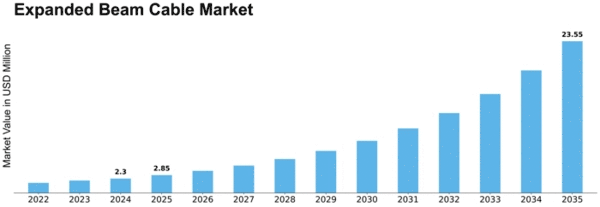
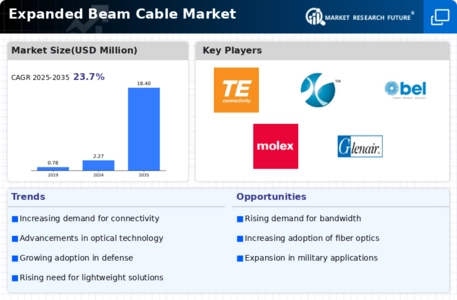

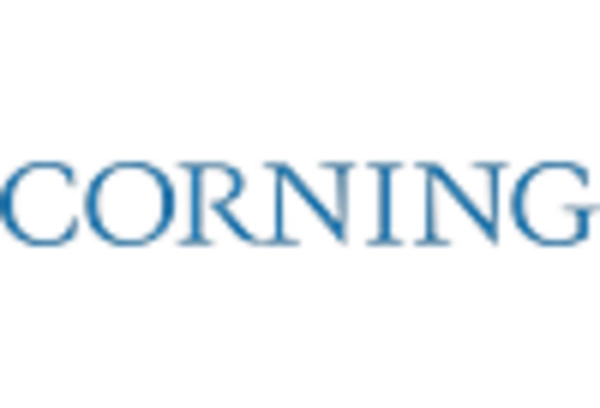
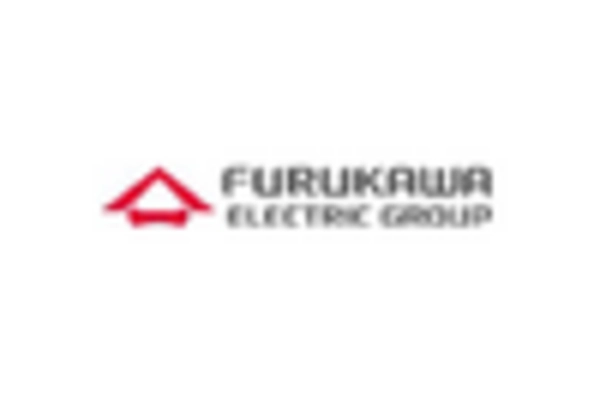
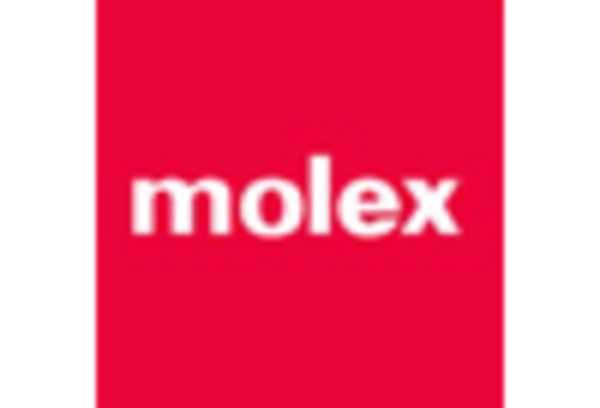
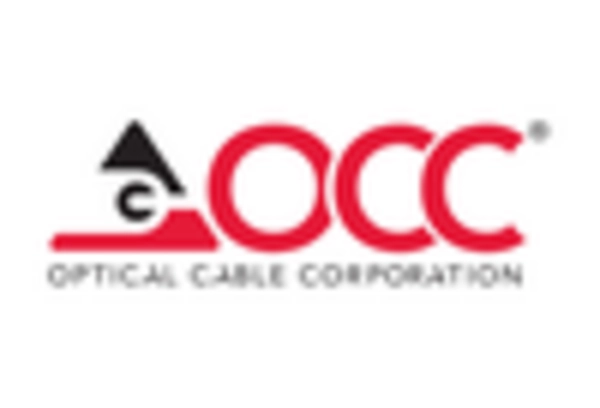
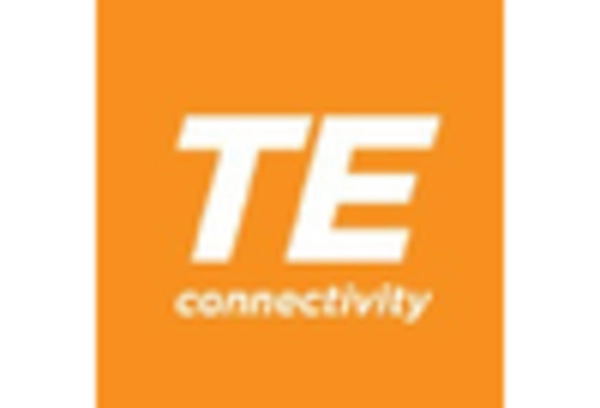









Leave a Comment